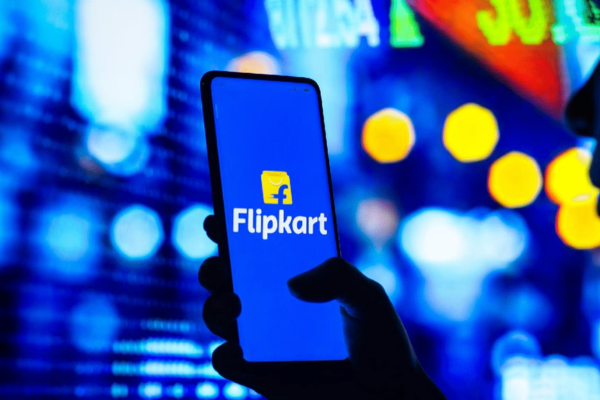Understanding Flipkart's Marketing Strategy: Key Tactics & Insights
Introduction Flipkart, one of India’s largest e-commerce platforms, has revolutionized the online retail landscape. Founded in 2007 by Sachin Bansal and Binny Bansal, Flipkart has established itself as a prominent player in India’s e-commerce market. The platform’s success isn’t solely due to its broad selection of products or cutting-edge technology; its marketing strategies have played a crucial role in attracting and retaining customers. In this article, we’ll delve into the key components of Flipkart’s marketing strategy, discussing their innovative approach to advertising, customer engagement, and partnerships.

- Flipkart’s Branding Strategy Flipkart has done a phenomenal job of creating a strong brand identity. Their branding strategy focuses on connecting emotionally with Indian consumers, ensuring they relate to the brand not just as an online shopping platform but as a part of their everyday lives.
Emotional Branding: Flipkart’s ads and promotions are often centered around emotions and everyday scenarios. Whether it’s celebrating festive seasons or solving everyday problems, Flipkart’s branding resonates with the Indian middle-class family, which is a major target audience.
Brand Awareness Campaigns: Flipkart consistently works on building brand recall. Through strategic TV and online advertising, they ensure their brand is always top of mind for Indian shoppers.

2. Digital Marketing: Flipkart’s Core Digital marketing forms the backbone of Flipkart’s marketing strategy. The company has invested heavily in digital advertising, utilizing various channels to reach customers.
Search Engine Optimization (SEO): Flipkart has a strong SEO strategy, making sure that whenever customers search for products, Flipkart is one of the top results. Through well-optimized product pages, descriptions, and content, Flipkart maintains high visibility on search engines.
Social Media Marketing: Flipkart’s presence on platforms like Instagram, Facebook, and Twitter is well-established. They create interactive posts, user-generated content campaigns, and influencer collaborations to engage with their audience. Flipkart uses social media not only to promote products but also to create a community of loyal customers.
Google Ads & Retargeting: Flipkart also uses Google Ads and other paid advertising channels to retarget users who have visited their website but haven’t made a purchase. This strategy is designed to encourage previous visitors to return and complete their purchases.
3. Customer-Centric Marketing Customer satisfaction is at the heart of Flipkart’s marketing strategy. The company has adopted several tactics to enhance customer experience and loyalty.
Personalized Recommendations: By analyzing customer behavior and preferences, Flipkart provides personalized product recommendations. Whether it’s showing related items or offering tailored discounts, Flipkart makes sure customers feel valued.
Customer Reviews & Ratings: One of the key features that set Flipkart apart from other e-commerce platforms is the prominence of customer reviews and ratings. This feature builds trust among potential buyers by offering real-time insights into product quality and seller reliability.
Customer Support: Flipkart has a strong customer service network, which includes 24/7 support via phone, chat, and email. Their easy return policy and fast delivery system contribute significantly to customer retention.
4. Seasonal and Event-based Marketing Flipkart has capitalized on India’s festive seasons by offering seasonal sales and promotions. This event-based marketing approach has helped drive large volumes of sales during peak periods.
Big Billion Days Sale: One of the standout examples of Flipkart’s seasonal marketing is its “Big Billion Days” sale, a yearly event that offers massive discounts on a wide range of products. This sale is highly anticipated by consumers and is promoted extensively across digital, television, and print media.
Partnerships with Celebrities: Flipkart also taps into celebrity endorsements during these big sale events, creating a sense of urgency and excitement. Celebrities like Virat Kohli and Amitabh Bachchan have appeared in Flipkart ads, making their campaigns even more impactful.
5. Influencer Marketing Influencer marketing is another area where Flipkart excels. Collaborating with influencers across multiple domains (technology, fashion, lifestyle), Flipkart effectively uses these partnerships to target niche audiences.
Tech and Gadget Influencers: For their electronics range, Flipkart partners with tech influencers who review and promote the products. This drives interest among tech-savvy consumers who trust influencer opinions.
Fashion and Lifestyle Influencers: Flipkart’s fashion category, including Flipkart Fashion and Myntra (owned by Flipkart), leverages fashion bloggers and social media influencers to showcase trends and fashion items, making them more appealing to the youth demographic.
6. Affiliate Marketing Program Flipkart has developed a robust affiliate marketing program, encouraging bloggers, websites, and social media influencers to promote Flipkart products for a commission. This affiliate program allows Flipkart to extend its reach exponentially by tapping into a vast network of online influencers.
7. Email Marketing Email marketing is another important channel for Flipkart to nurture leads, drive traffic, and retain customers. Flipkart uses segmented email campaigns to send personalized offers, product recommendations, and sale notifications.
Transactional Emails: These include order confirmations, shipping updates, and feedback requests. They help in maintaining communication with customers and encouraging repeat purchases.
Promotional Emails: During sales events, Flipkart sends out emails with exclusive offers and discounts to their subscriber base. This generates excitement and encourages immediate action.
Recent Posts
Check Our Digital Marketing Services
- Amazon Advertising & Amazon Listing
- Contact Us
- Content Marketing
- Email Marketing
- Facebook Advertising
- Flipkart Advertising & Flipkart Listing
- Get Quote
- Google Advertising
- Google My Business (GMB) Management
- Portfolio
- PPC(Pay-per-click) Advertising
- Privacy Policy
- SEO services in varanasi
- Services
- SMM
- SMO
- Testimonials
- Website Development
- WhatsApp Marketing